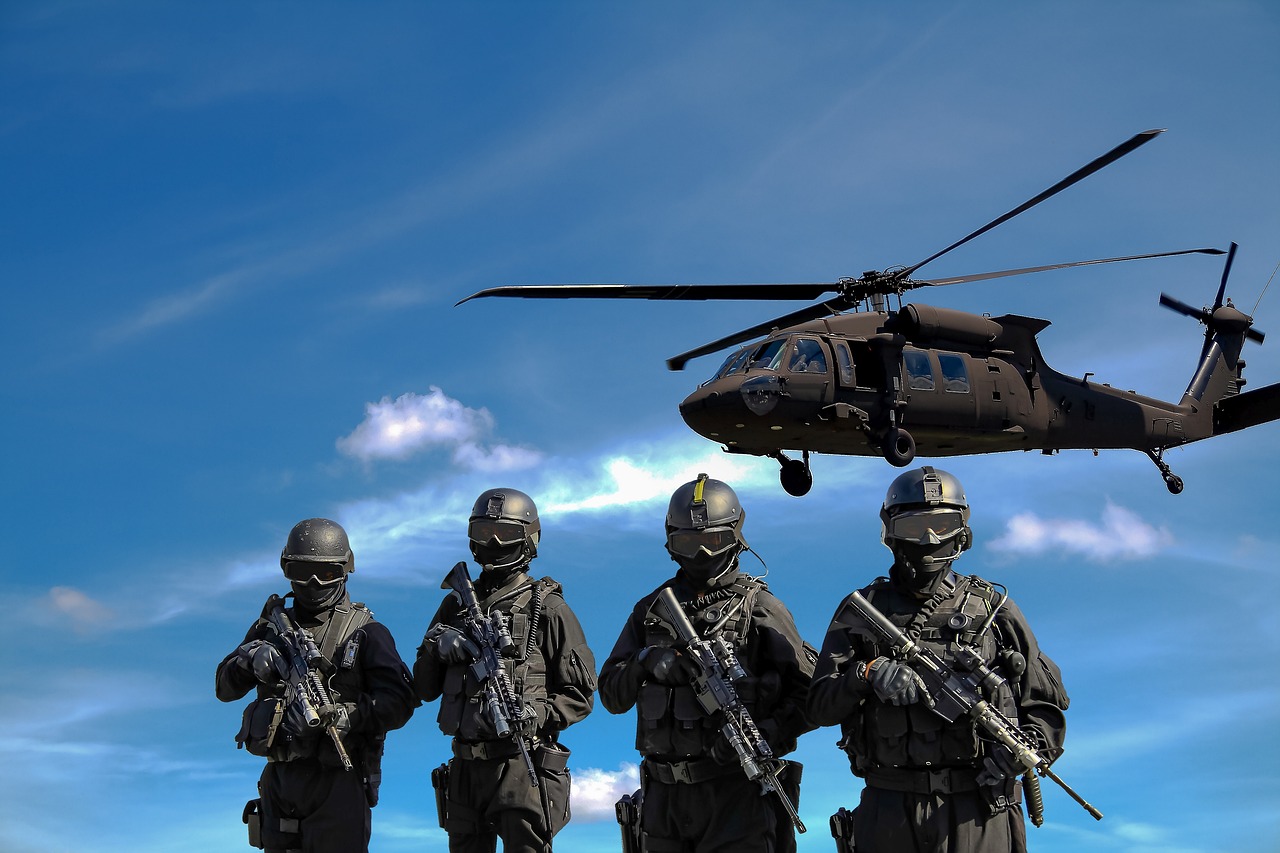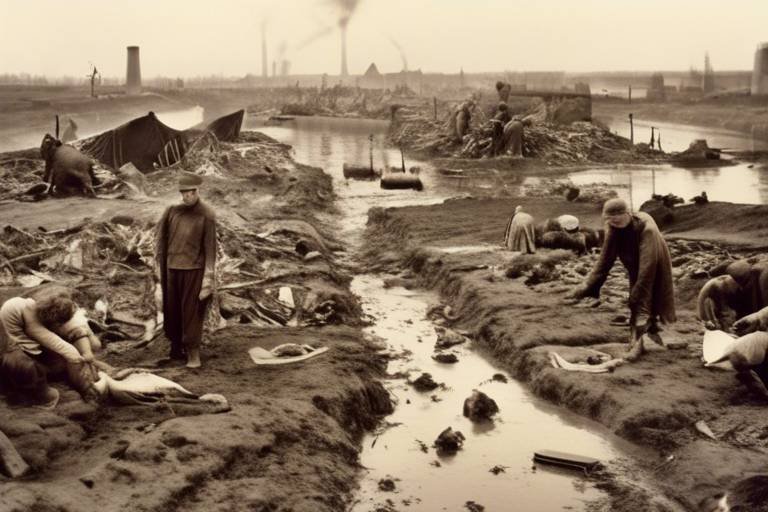The Historical Context of the Cold War - Causes and Effects
The Cold War, a period of intense geopolitical tension between the United States and the Soviet Union, had profound causes and lasting effects on global politics. Emerging in the aftermath of World War II, this ideological standoff reshaped the world order for decades to come.
Rooted in stark ideological differences between capitalism and communism, the Cold War was fueled by the power struggles and mistrust that characterized the post-war era. The wartime alliances that defeated the Axis powers quickly dissolved, giving rise to a new era of suspicion and competition between former allies.
Key events and turning points such as the Berlin Airlift, Cuban Missile Crisis, and Korean War punctuated the Cold War with moments of high tension and brinkmanship. These incidents not only heightened the stakes but also solidified the rival blocs' positions in a global chess game of influence and control.
The arms race and the looming nuclear threat defined the military dimension of the Cold War. Both superpowers engaged in a relentless pursuit of nuclear supremacy, leading to unprecedented levels of armament and the chilling doctrine of mutually assured destruction, where the use of nuclear weapons would result in the annihilation of both sides.
Proxy wars in regions like Vietnam and Afghanistan became battlegrounds for superpower rivalry, resulting in devastating conflicts that left lasting scars on the affected populations. These conflicts underscored the global impact of the Cold War, as smaller nations became pawns in a larger ideological struggle.
The eventual end of the Cold War came with the thaw in relations between the US and USSR, culminating in the collapse of the Soviet Union. The fall of the Berlin Wall in 1989 symbolized the end of an era, marking a seismic shift in global power dynamics and ushering in a new world order.
The legacy of the Cold War continues to shape international relations, security policies, and regional conflicts in the post-Cold War world. The lessons learned from this period of confrontation are crucial in navigating the complexities of a rapidly changing geopolitical landscape.
Moreover, the cultural and social impact of the Cold War cannot be understated. It influenced popular culture, societal attitudes, and global perceptions, permeating art, literature, and collective memory with themes of espionage, paranoia, and the specter of nuclear annihilation.
As we reflect on the Cold War's causes and effects, we are reminded of the importance of diplomacy, conflict resolution, and the prevention of future global crises. The Cold War serves as a cautionary tale, highlighting the dangers of unchecked power dynamics and the necessity of cooperation in a world where interdependence is the norm.

Origins of the Cold War
Exploring the origins, key events, and lasting impacts of the Cold War, a period of geopolitical tension between the United States and the Soviet Union that shaped global politics for decades.
The origins of the Cold War can be traced back to the ideological differences that emerged between the capitalist West, led by the United States, and the communist East, represented by the Soviet Union. The aftermath of World War II saw these two superpowers vying for influence and control over the post-war world, setting the stage for a prolonged period of hostility and suspicion.
Wartime alliances, such as the uneasy partnership between the US and the USSR during World War II, quickly gave way to power struggles as each side sought to promote its own political and economic systems. The division of Europe into Western and Eastern blocs further deepened the rift, with the Iron Curtain becoming a symbolic barrier separating the two ideological camps.
The Cold War was not just a political standoff but also a clash of worldviews, with capitalism and democracy pitted against communism and authoritarianism. This clash of ideologies fueled mutual distrust and competition for global supremacy, laying the foundation for decades of tension and conflict.
As the world watched anxiously, the Cold War began to take shape, setting the stage for a new era of international relations characterized by suspicion, espionage, and the constant threat of nuclear annihilation.

Key Events and Turning Points
The Cold War, a period of intense rivalry and tension between the United States and the Soviet Union, was marked by several key events and turning points that shaped its course and outcomes. One of the most significant events during this era was the Berlin Airlift, where Western Allies undertook a massive airlift operation to supply West Berlin after the Soviet Union blockaded the city in 1948. This event highlighted the determination of the Western powers to resist Soviet aggression and set the stage for further confrontations.
Another crucial moment in Cold War history was the Cuban Missile Crisis in 1962, a 13-day standoff between the US and the USSR over the presence of Soviet nuclear missiles in Cuba. This event brought the world to the brink of nuclear war and underscored the dangers of escalating tensions between the superpowers.
The Korean War (1950-1953) also played a pivotal role in the Cold War, as it was the first major military conflict between communist and capitalist forces. The war ended in an armistice, solidifying the division of the Korean Peninsula into North and South Korea, a lasting legacy of the Cold War's impact on regional geopolitics.
These key events and turning points exemplify the high stakes and intense competition that characterized the Cold War era, demonstrating how individual incidents could have far-reaching consequences on global security and stability.

Arms Race and Nuclear Threat
Exploring the origins, key events, and lasting impacts of the Cold War, a period of geopolitical tension between the United States and the Soviet Union that shaped global politics for decades.
Investigating the ideological differences, wartime alliances, and power struggles that laid the foundation for the Cold War between the capitalist West and the communist East.
Analyzing significant events such as the Berlin Airlift, Cuban Missile Crisis, and Korean War that escalated tensions and defined the Cold War era's dynamics.
Examining the race for nuclear supremacy, arms build-up, and the doctrine of mutually assured destruction that characterized the military aspect of the Cold War.
The Arms Race was like a high-stakes game of poker, with both the United States and the Soviet Union constantly upping the ante by developing more powerful and destructive weapons. Each side sought to outmatch the other in a deadly game of one-upmanship, leading to an unprecedented build-up of nuclear arsenals. The looming threat of nuclear war hung over the world like a dark cloud, with the potential for catastrophic consequences.
As both superpowers raced to develop more advanced nuclear weapons, the concept of mutually assured destruction emerged. This doctrine posited that any nuclear attack would result in the total annihilation of both the attacker and the defender, serving as a deterrent against launching a first strike. The delicate balance of power teetered on the edge, with the world holding its breath, hoping that rationality would prevail over destruction.
Discussing how conflicts in Vietnam, Afghanistan, and other regions became battlegrounds for superpower rivalry, shaping the political landscape of the Cold War era.
Exploring the factors that led to the eventual thaw in relations between the US and USSR, culminating in the collapse of the Soviet Union and the end of the Cold War.
Evaluating the enduring legacy of the Cold War on international relations, security policies, and regional conflicts in the post-Cold War world.
Examining how the Cold War influenced popular culture, societal attitudes, and global perceptions, leaving a lasting imprint on art, literature, and memory.
Reflecting on the lessons of the Cold War in diplomacy, conflict resolution, and the prevention of future global crises in an increasingly interconnected world.

Proxy Wars and Global Impact
Proxy wars during the Cold War era were pivotal in shaping global politics, as they served as battlegrounds for the ideological and strategic conflicts between the United States and the Soviet Union. These conflicts, such as the Vietnam War and the Soviet invasion of Afghanistan, were fought indirectly through local proxies, with both superpowers providing military and financial support to their respective allies.
One of the most notable proxy wars was the Vietnam War, where the US supported South Vietnam against the communist North, backed by the Soviet Union and China. The war not only resulted in massive casualties and devastation but also highlighted the limits of superpower intervention in distant conflicts.
In Afghanistan, the Soviet Union's intervention in support of the communist government led to a prolonged and costly conflict that had far-reaching consequences. The US provided support to Afghan resistance fighters, including the Mujahideen, laying the groundwork for future geopolitical dynamics in the region.
These proxy wars had a significant global impact, as they fueled regional instability, contributed to the proliferation of weapons, and exacerbated existing tensions between the superpowers. The conflicts also had humanitarian consequences, leading to widespread suffering and displacement of populations caught in the crossfire.
Moreover, the proxy wars underscored the complexities of modern warfare and the challenges of managing conflicts in a multipolar world. The superpowers' involvement in these distant conflicts demonstrated the interconnectedness of global security and the risks of escalation in volatile regions.
As proxy wars became emblematic of Cold War geopolitics, they left a lasting legacy on international relations, influencing the strategies and tactics of future conflicts and shaping the post-Cold War security landscape. The proxy wars not only highlighted the dangers of ideological confrontation but also underscored the need for diplomatic solutions and multilateral cooperation to prevent similar crises in the future.

End of the Cold War
As the Cold War reached its conclusion, the world witnessed a transformative shift in global dynamics. The marked a significant turning point in history, signifying the culmination of decades of intense rivalry and tension between the United States and the Soviet Union.
One of the pivotal events that led to the end of the Cold War was the fall of the Berlin Wall in 1989, symbolizing the collapse of the division between East and West. This momentous occasion not only physically reunited a divided city but also served as a powerful metaphor for the reunification of Germany and the broader thawing of relations between the superpowers.
The dissolution of the Soviet Union in 1991 marked the definitive end of the Cold War era. The once formidable communist state fragmented into independent republics, bringing an end to the bipolar world order that had defined international politics for decades.
With the disintegration of the Soviet bloc, former satellite states in Eastern Europe gained newfound independence and sovereignty. The collapse of communism in these countries paved the way for democratic transitions and realignments, reshaping the geopolitical landscape of Europe.
The also saw a shift in global power dynamics, with the United States emerging as the sole superpower on the world stage. This new unipolar order ushered in an era of American hegemony, shaping international relations and security policies in the post-Cold War era.
Furthermore, the conclusion of the Cold War brought about new challenges and opportunities for diplomacy and international cooperation. The focus shifted from ideological confrontation to addressing transnational threats, fostering economic integration, and promoting peace and stability in a rapidly changing world.
In retrospect, the serves as a reminder of the transformative power of diplomacy, dialogue, and compromise in resolving conflicts and building sustainable peace. It underscores the importance of learning from past mistakes and working towards a more peaceful and prosperous future for all nations.

Legacy and Contemporary Relevance
Exploring the legacy and contemporary relevance of the Cold War unveils a complex web of historical, political, and social implications that continue to shape the modern world. The end of the Cold War in the early 1990s marked a pivotal moment in global history, yet its effects resonate to this day. The power dynamics established during the Cold War era still influence international relations, security policies, and regional conflicts, illustrating the enduring impact of this period on the geopolitical landscape.
One key aspect of the Cold War's legacy is the proliferation of nuclear weapons and the ongoing threat of nuclear warfare. The arms race between the US and the USSR led to the accumulation of vast nuclear arsenals, creating a delicate balance of power based on the doctrine of mutually assured destruction. Today, the specter of nuclear conflict remains a pressing concern, with new players entering the arena and the potential for catastrophic consequences looming large.
Furthermore, the Cold War's influence extends beyond military strategy to encompass cultural and social realms. The ideological divide between capitalism and communism permeated all aspects of society, shaping popular culture, societal attitudes, and global perceptions. The era produced iconic works of art, literature, and cinema that reflected the anxieties and tensions of the time, leaving a lasting imprint on the collective memory of nations around the world.
In a contemporary context, the lessons of the Cold War continue to inform diplomatic strategies, conflict resolution efforts, and the quest for global stability. The need for effective communication, negotiation, and cooperation in addressing international crises echoes the experiences of the Cold War era, highlighting the importance of learning from past mistakes to prevent future conflicts.
As we navigate an increasingly interconnected world fraught with complex challenges, the legacy of the Cold War serves as a cautionary tale and a source of valuable insights. By studying the causes, events, and aftermath of this transformative period in history, we gain a deeper understanding of the dynamics of power, the complexities of ideological conflict, and the enduring impact of geopolitical rivalries on the course of human civilization.

Cultural and Social Impact
The Cold War had a profound impact not only on geopolitics but also on culture and society worldwide. The intense rivalry between the US and the USSR seeped into every aspect of life, influencing art, literature, and societal attitudes. The era of suspicion and fear gave rise to a plethora of spy novels, movies, and television shows that romanticized the world of espionage and intrigue. The iconic character of James Bond, for instance, epitomized the suave spy navigating the murky waters of Cold War politics.
Furthermore, the Cold War era witnessed the emergence of dystopian literature that reflected the anxieties of the time. Works like George Orwell's "1984" and Aldous Huxley's "Brave New World" painted bleak pictures of totalitarian regimes and oppressive surveillance, tapping into the collective fears of a society on the brink of nuclear annihilation.
In the realm of visual arts, the Cold War inspired a wave of abstract expressionism and avant-garde movements that sought to break free from traditional constraints. Artists like Jackson Pollock and Mark Rothko used their canvases to convey the chaos and uncertainty of the era, creating powerful visual metaphors for the existential angst that pervaded society.
On a social level, the Cold War fostered a climate of suspicion and conformity, leading to the rise of McCarthyism and the suppression of dissenting voices. The fear of communist infiltration permeated every aspect of American life, from politics to entertainment, fueling a culture of paranoia and censorship.
Moreover, the Cold War era witnessed significant shifts in societal attitudes towards gender roles and race relations. The emergence of the civil rights movement and the feminist movement challenged traditional norms and paved the way for greater equality and social justice. The struggle for civil rights in the US, for example, mirrored the global fight against oppression and tyranny, drawing inspiration from anti-colonial movements in Africa and Asia.
In conclusion, the cultural and social impact of the Cold War was far-reaching and multifaceted, shaping the collective consciousness of entire generations and leaving an indelible mark on the fabric of society. From literature to art to social movements, the legacy of the Cold War continues to resonate in the contemporary world, reminding us of the enduring power of human resilience and creativity in the face of adversity.

Lessons Learned and Future Implications
Exploring the origins, key events, and lasting impacts of the Cold War, a period of geopolitical tension between the United States and the Soviet Union that shaped global politics for decades.
Investigating the ideological differences, wartime alliances, and power struggles that laid the foundation for the Cold War between the capitalist West and the communist East.
Analyzing significant events such as the Berlin Airlift, Cuban Missile Crisis, and Korean War that escalated tensions and defined the Cold War era's dynamics.
Examining the race for nuclear supremacy, arms build-up, and the doctrine of mutually assured destruction that characterized the military aspect of the Cold War.
Discussing how conflicts in Vietnam, Afghanistan, and other regions became battlegrounds for superpower rivalry, shaping the political landscape of the Cold War era.
Exploring the factors that led to the eventual thaw in relations between the US and USSR, culminating in the collapse of the Soviet Union and the end of the Cold War.
Evaluating the enduring legacy of the Cold War on international relations, security policies, and regional conflicts in the post-Cold War world.
Examining how the Cold War influenced popular culture, societal attitudes, and global perceptions, leaving a lasting imprint on art, literature, and memory.
Reflecting on the lessons of the Cold War in diplomacy, conflict resolution, and the prevention of future global crises in an increasingly interconnected world.
Frequently Asked Questions
- What were the main causes of the Cold War?
The main causes of the Cold War were rooted in ideological differences between the capitalist West, led by the United States, and the communist East, represented by the Soviet Union. Additionally, power struggles, wartime alliances, and conflicting national interests further fueled the tensions that characterized this period of geopolitical confrontation.
- How did the Arms Race contribute to the Cold War?
The Arms Race was a significant aspect of the Cold War, as both the US and the USSR engaged in a competition to develop and stockpile nuclear weapons. This led to a heightened sense of military tension and the doctrine of mutually assured destruction, where the threat of nuclear war loomed large, shaping global politics and security policies.
- What were the key turning points of the Cold War?
Key events such as the Berlin Airlift, Cuban Missile Crisis, and Korean War were pivotal moments that escalated tensions between the superpowers and defined the dynamics of the Cold War. These crises highlighted the risks of direct confrontation and the need for diplomatic solutions to prevent a catastrophic global conflict.
- How did the Cold War impact global politics?
The Cold War had a profound impact on global politics, as superpower rivalry played out in proxy wars in Vietnam, Afghanistan, and other regions. These conflicts became battlegrounds for ideological struggles, shaping the political landscape and influencing the course of international relations during the Cold War era.
- What lessons can be learned from the Cold War?
Reflecting on the Cold War offers valuable insights into diplomacy, conflict resolution, and the importance of maintaining open communication channels to prevent future global crises. The Cold War experience underscores the need for dialogue, cooperation, and strategic engagement in addressing contemporary security challenges.



















